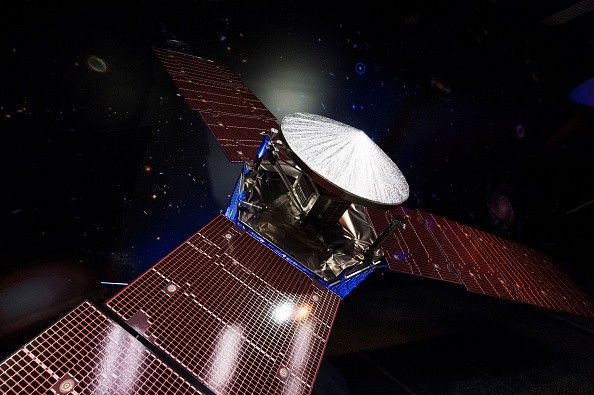NASA's Juno spacecraft is revealing more mysteries surrounding the planet's iconic Great Red Spot.

The mission, named after the mythological Roman deity's wife (Jupiter is the husband of Juno) has been able to observe the gargantuan storm from much closer than before.
According to NPR.org, it's gathered enough data to suggest that the Great Red Spot is way deeper than previously thought, and that it's changing over time.
Data collected by the Juno spacecraft states that the Great Red Spot is roughly 300 to 500 kilometers (186 to 310 miles) deep, writes The Verge.
Planetary scientist Paul Byrne of the Washington University --St. Louis likens the spot to any storm here on Earth. He says it's basically composed of very dense clouds, not unlike a typhoon or hurricane.
But it's no ordinary storm. Data from the NASA Juno spacecraft indicate that it actually has its own gravitational field.
The field is even strong enough to make Juno slightly wobble during its 2019 flyby of the spot.
Its gravity is likely due to its insane size. At roughly 10,000 miles across, Jupiter's Great Red Spot is bigger than Earth itself.
According to the scientists here, the gravitational field of the spot is creating "speed bumps" for NASA's Juno that it's causing its radio signals to be stretched and squeezed.
This is a phenomenon known as the Doppler shift/Doppler Effect, which explains why the siren of a passing ambulance, for instance, sounds different from afar compared to when it's close to you.
NASA's Juno Mission Confirms The Spot Is 'Shrinking'
Jupiter's Great Red Spot has been continuously observed for roughly 200 years. The Juno mission by NASA is the first one to let astronomers observe it closely. And now, they seem to have observed that the Spot has been shrinking.

This has been the case, as per NASA astronomers, since the Voyager spacecraft made a flyby back in 1979. However, they also say that the Great Red Spot is actually growing "taller" as it shrinks in diameter, which says a lot about its perceived depth.
The Juno Mission: A Closer Look
NASA first launched the Juno spacecraft on August 5, 2011. It started orbiting Jupiter on July 4, 2016, with the main goal of closely observing what's going on in the gas giant's atmosphere, writes Space.com.
The spacecraft itself relies on solar power as it conducts experiments in the orbit of Jupiter. And since Jupiter is five times farther from the Sun than Earth is, Juno is also the record-holder for the greatest distance ever achieved in solar power, writes NASA.

Juno was still able to use its massive 66-foot-long solar panels to generate power even if it was 493 million miles from the Sun; a record-breaking distance measured on January 13, 2016.
NASA's Juno spacecraft beat the erstwhile record holder, the Rosetta spacecraft of the European Space Agency (ESA), by one million miles.
This article is owned by Tech Times
Written by RJ Pierce
ⓒ 2025 TECHTIMES.com All rights reserved. Do not reproduce without permission.




